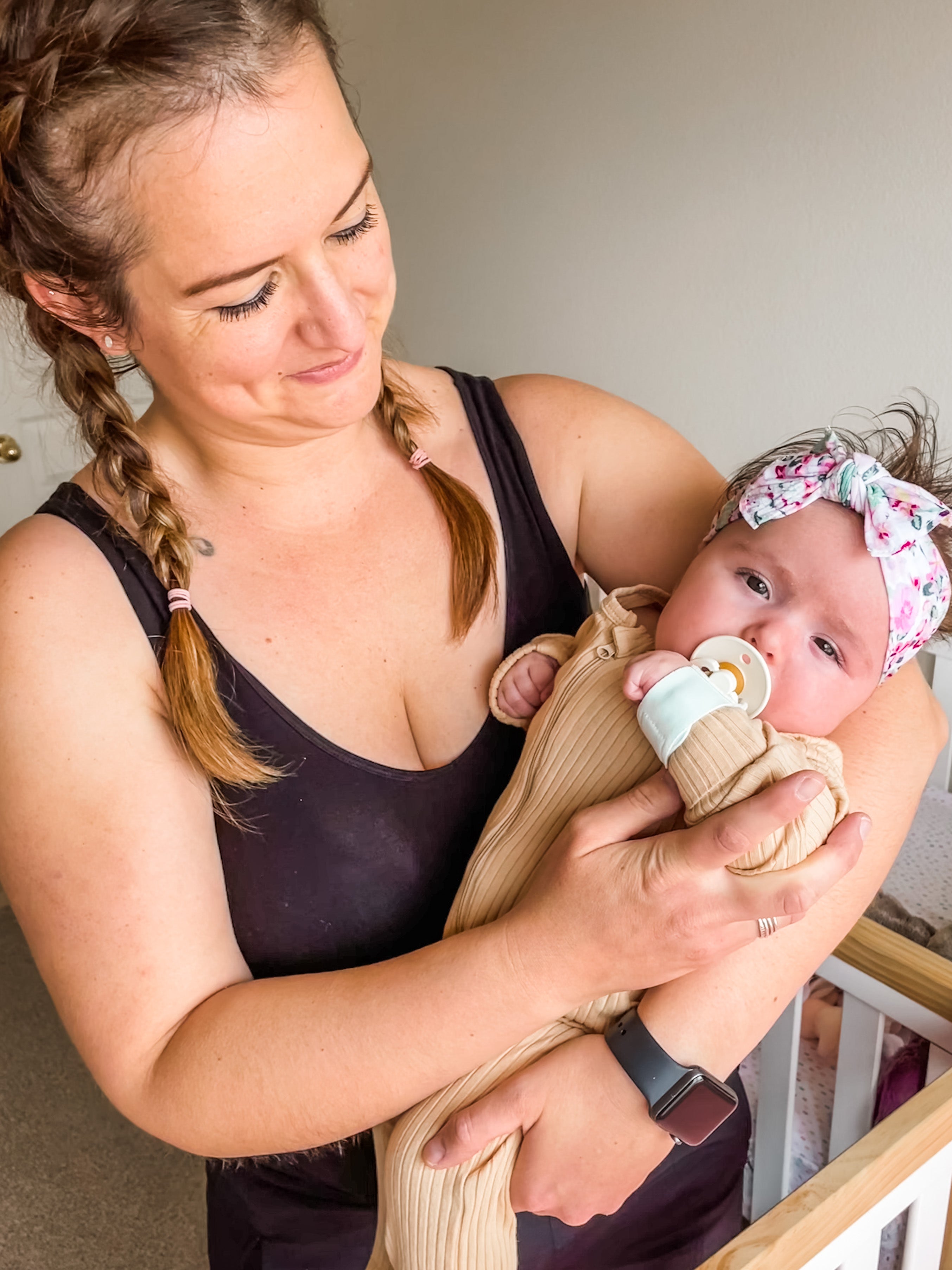
4 Tips to Help Your Baby Take a Pacifier
Pacifiers are sanity savers! But what if your baby does not take to one naturally? The Ingy Bingy pacifier wristband can help!
4 Tips to Help Your Baby Take a Pacifier
Pacifiers are sanity savers! You can pop an infant pacifier into their mouth and make your baby go from fussy to happy in a matter of moments. However, not every baby takes to a pacifier right away.
Some babies prefer to suckle their mama’s breast. While it’s a privilege to be your baby’s safe space, it can be exhausting to be the sole person who can calm your baby now. Getting your baby to take a newborn pacifier or infant pacifier can give you some space and your baby some independence!
What should you do if your baby won’t take a pacifier?
- Try the Ingy Bingy Band: An issue your baby might be having with taking a pacifier is that the infant pacifier keeps falling out. This pacifier wristband changes that completely! This pacifier bracelet attaches to any pacifier and velcros around baby’s wrist so that it is right where they need it, whenever they need it.
Studies say babies can’t locate a pacifier and put it into their mouth until they are 8 months old. The Ingy Bingy Band cuts that time in half! Babies can self-soothe from as early as 4 months old with this pacifier wristband. If your baby isn’t taking a pacifier, making it easily accessible to them is is a great place to start!
- Try different shapes of pacifiers: There are several types of pacifiers on the market right now. Your baby may just not feel comfortable with the type you are offering. The two main shapes of pacifiers are rounded or orthodontic.
Rounded nipples tend to be easier for babies to take, but orthodontic nipples support the shape of the developing jaw and palate of the baby. Try both styles of pacifiers to see if your baby prefers one style over the other.
- Try different brands of pacifiers: Even if you’ve found the style your baby likes they might not like the substance it’s made out of. Most pacifiers are made of rubber or silicon. Some materials are more firm than others so try multiple brands to see if your baby prefers something different than what you’ve been offering.
- Check age range: The packaging on each pacifier will say the recommended age range for that pacifier. Your child might not be taking to a pacifier because they might be using a pacifier that is not appropriate for their age. As your child grows, pacifiers also change shape and firmness. These age guidelines exist to keep your baby safe and ensure the pacifiers work effectively!
The Ingy Bingy band comes in two different design styles so that it can attach to 100% of pacifiers on the market! The sequoia model is used if the pacifier has holes near their nose and chin. The pacific model is used if your baby’s pacifier has holes at the sides of their mouth when in use.
Which pacifiers do you recommend?
First and foremost, we recommend pacifier safety! Always use a pacifier that is one piece to avoid choking hazards! Some popular brands that our users love are: Itzy Ritzy, Ryan and Rose, The Dearest Grey Mod Pacifier, Avent, Nuk, BIBS, Dr. Brown, and MAM.

